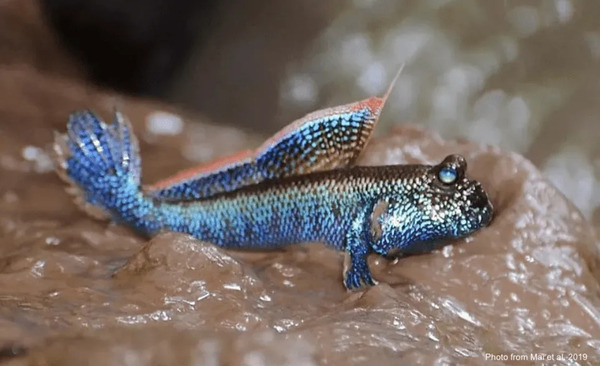When you think of fish, feet probably aren’t the first thing that comes to mind. But nature loves to surprise us, and some fish seem to defy the norms by having what we might call “feet” or at least feet-like appendages. So, do fish really have feet? And which fish can walk, or at least look like they can? Let’s dive into this fascinating topic and uncover the weird and wonderful world of walking fish!
Technically, fish don’t have “feet” in the way mammals or birds do. Fish are equipped with fins that help them swim, steer, and sometimes even “walk.” However, some fish species have evolved adaptations that resemble feet or enable them to move across land or the ocean floor in a way that looks remarkably foot-like.
Fish feet aren’t actual feet with bones, toes, or nails. Instead, they’re often modified fins, fleshy protrusions, or limb-like structures. These adaptations help certain fish species survive in challenging environments, whether they’re crawling over mud, hopping between tidal pools, or maneuvering through tight spaces.
Now that we’ve cleared up the technicalities, let’s look at some fascinating examples of fish with feet-like structures or walking abilities:
What makes them special?
Mudskippers are amphibious fish that can crawl on land using their strong pectoral fins. They’ve even adapted to breathe air, making them a standout example of a fish that “walks.”
Why do they need feet-like fins?
Mudskippers use their fins to move between muddy habitats, burrow into the ground, and escape predators.

What’s unique about them?
Frogfish have fleshy, limb-like pectoral fins that resemble stubby feet. These fins help them “walk” along the ocean floor rather than swimming like most fish.
Why this adaptation?
Their unique locomotion helps them sneak up on prey and stay hidden in coral reefs.

Wait, isn’t that a salamander?
Yes, but axolotls are often referred to as “walking fish” due to their aquatic lifestyle and external gills. While they’re technically amphibians, their resemblance to fish makes them a fun inclusion on this list.

What’s their trick?
This species can move on land using a combination of fin and body movements. It’s especially common in Southeast Asia, where it uses this skill to migrate between water sources.
How do they do it?
Their strong pectoral fins and flexible bodies let them slither over short distances.

What is Tiktaalik?
Tiktaalik is a famous fossil that represents a transitional species between fish and tetrapods (four-legged vertebrates). It had fins with bones resembling wrists, showing how early fish evolved “feet” for life on land.
Why is it important?
Tiktaalik is a crucial piece of the puzzle in understanding how fish evolved limbs and eventually gave rise to land animals.

The development of feet-like structures in fish is a fascinating example of evolution adapting species to their environments. Here’s why some fish developed these traits:
Mudskippers and walking catfish evolved their “feet” to escape predators and find food in shallow, muddy, or drying environments.
Tiktaalik’s limb-like fins helped it move through shallow waters and possibly crawl onto land.
Frogfish use their foot-like fins to navigate the complex terrain of coral reefs and rocky seabeds, helping them hunt prey and avoid predators.
The evolution of feet from fins was a crucial step in the journey of life from water to land, enabling early tetrapods to colonize terrestrial habitats.
Fish with feet-like fins don’t just use them for walking. These adaptations serve multiple purposes:
Mudskippers and walking catfish use their fins to move across land or mud, helping them survive outside water temporarily.
Frogfish “walk” along the ocean floor to stalk prey.
Fish like the frogfish use their fins to stay stable on uneven surfaces.
Mudskippers use their fins to dig burrows and climb up muddy embankments.
Fish with feet-like adaptations represent a key stage in evolutionary history. Here’s what science tells us:
Fins in fish like Tiktaalik contained bones similar to wrists and fingers, showing how early fins transformed into limbs.
Fossils like Tiktaalik bridge the gap between aquatic and terrestrial life, providing a window into how fish evolved to walk on land.
Mudskippers and walking catfish demonstrate how modern fish can evolve to survive in environments that push their limits.
Frogfish’s “Feet” Help Them Hide
Frogfish use their camouflage and foot-like fins to blend into coral reefs and surprise their prey.
Mudskippers Are Excellent Climbers
Mudskippers can climb trees and embankments using their fins and tails!
Tiktaalik Is a Celebrity Fossil
Tiktaalik is often called the “missing link” between fish and land-dwelling creatures.
Studying fish with feet-like structures offers valuable insights into evolution, biodiversity, and the adaptability of life. From Tiktaalik’s fossil record to modern-day mudskippers, these creatures tell an incredible story about the transition from water to land.
While fish don’t have feet in the traditional sense, many species have evolved fascinating adaptations that let them crawl, walk, or stabilize themselves in unique environments. These “walking fish” are a testament to nature’s creativity and the incredible adaptability of life.
So, next time you see a mudskipper hopping around or learn about Tiktaalik’s journey from water to land, remember: evolution is full of surprises! Keep exploring the amazing diversity of aquatic life, and you’ll discover even more fascinating creatures.
animal tags: Fish-Have-Feet
We created this article in conjunction with AI technology, then made sure it was fact-checked and edited by a Animals Top editor.